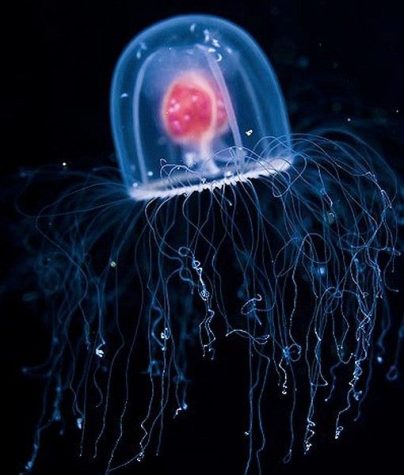The Immortal Jellyfish
November 22, 2021
 Turritopsis dohrnii is a species of biologically immortal jellyfish, also known as The Immortal Jellyfish. It is one of the only known organisms that can revert to a sexually immature stage. Meaning that they can turn back time on their own lives.
Turritopsis dohrnii is a species of biologically immortal jellyfish, also known as The Immortal Jellyfish. It is one of the only known organisms that can revert to a sexually immature stage. Meaning that they can turn back time on their own lives.
With their unique skill, these jellyfish might be able to help fight one of human health’s greatest threats. Cancer.
In a study conducted by Maria Pia Miglietta and her colleague, Harilaos Lessios, they surprisingly found that the DNA from specimens were identical, despite being collected from around the globe.
The main body of the immortal jellyfish is bell-shaped, with a maximum diameter of about 4.5 millimetres (0.18 in) and is about as tall as it is wide.
Although the jellyfish is biologically immortal, it can still be killed. Its main predators are sharks, sea turtles, other jellyfish, and tuna. Despite its long list of predators, the immortal jellyfish has still been able to spread across the globe.
Experiments have shown that all stages of the jellyfish, from newly ‘born’ to fully mature individuals, can transform back into polyps under the conditions of starvation, sudden temperature change, reduction of salinity, and artificial damage of the body with forceps or scissors.
Interestingly enough, these jellyfish might be able to participate in helping cure other diseases in addition to cancer. With their ability to regenerate, we could use that to either cure or treat previously un-curable conditions. Although this is unknown and requires further study.
Although being the only animal that can completely regenerate its entire body, there are still others that have ways to heal themselves. Such as salamanders. Salamanders are a group of amphibians typically characterized by their lizard-like appearance, with slender bodies, blunt snouts ,and short limbs.
The salamander is one of the many amphibians that can regrow their limbs.They use tail autotomy to escape predators. Tail autotomy is the event when a salamander detaches their tail to get away from predators. The tail drops off and wriggles around for a while after an attack, and the salamander either runs away or stays still enough not to be noticed while the predator is distracted. The tail regrows with time, and the salamanders continue with life.
Although there is limited study on the immortal jellyfish. Their skill is still unique and fascinating. Perhaps with further research, we can discover how the jellyfish is able to do what it does. If we do, perhaps that could help us find treatments or cures for cancer and other medical conditions.
https://www.nationalgeographic.com/animals/article/immortal-jellyfish-swarm-oceans-animals





